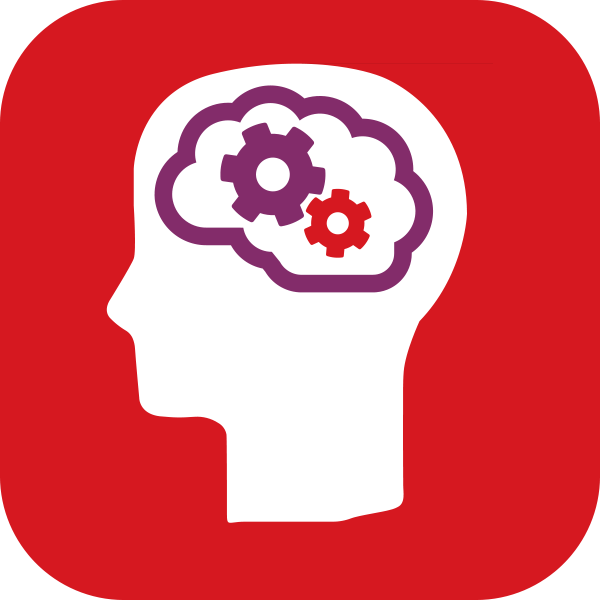“ ”

Uncovering differences between attainment and ability
CAT4 measures the four main types of reasoning ability that are known to make a difference to learning and achievement: verbal, non-verbal, quantitative and spatial ability. It gives valuable insight into students’ strengths and areas for development, and enables teachers to adapt their teaching methods to suit the needs of the students. It does not refer to any specific curriculum or rely on English as a first language.
Shallu continues: “We follow the ICSE curriculum up to Class X and ISC curriculum in Class XI and XII. These are taught primarily in English although 75% of our students have a different first language. I liked the fact this was not an issue with CAT4 because three of the four sections of the test are not reliant on language skills.
When I decided to take up a trial of CAT4, I took a sample of two year groups, and saw just how significant the benefits could be in the long run.
There were some really surprising results from children who, up until this point, had not performed well in tests. For example, there was one eight year old boy in Grade 3 who didn’t excel in class, yet it turned out his spatial ability was the highest in the class – an important indicator for success in Science, Technology, Engineering and Maths (STEM) subjects. We could also see that it was his low verbal reasoning ability that was impacting his attainment. Using the data has enabled teachers to personalise and differentiate teaching that will help him realise his potential within science and maths.”
Training and support
The school decided to assess each Grade with CAT4 before the end of the school year in March. As this is a new type of assessment for Indian schools, Shallu was not able to benefit from peer support.
She explains: “I did a lot of reading and research to understand how CAT4 could help us although administering the assessment itself was straightforward. However, it took us a while to get a detailed understanding of how to read the results or know the best way to implement what we learnt. Eventually, our Principal, Priya Rajwade, and I met a trainer from GL Education in Mumbai and then both of us participated in an online training course, which helped us enormously in knowing what to do next.”
Priya and Shallu have been very careful about how they shared information with staff so that they did not see it as additional work. “Teachers received a PDF report of results and we asked them to focus on the narrative, which includes suggestions for interventions and approaches to teaching. We also appointed a CAT4 co-ordinator for each Grade or year group whose job it is to make sure everyone is comfortable with the data.
Teachers soon realised the data would help underperforming children or challenge our most able students by making slight changes in their teaching. For example, we have a child who achieved astonishingly well across all four batteries. To keep her engaged and motivated, we are using a range of stretch activities to challenge her, including entering academic competitions.”
“ ”

Informing literacy and maths interventions
By analysing whole school data, AUS has been able to clearly identify two weaker areas affecting their students.
Shallu explains: “The first area was the verbal battery where our scores were comparatively low. We’ve realised that some children are not working at the level their abilities suggest as their low literacy is holding them back. We are now taking steps to increase our literacy interventions and have implemented a six-month intensive programme specifically aimed at helping students with their reading and essay writing. By doing this, we aim to help the children to realise their potential across science, maths and social sciences.
The second area was quantitative reasoning. The results from two year groups in particular were also comparatively low, indicating the need for greater support. Identifying these areas has given us the chance to work on ways to enhance clarity around topics and we have invested in additional maths resources to support maths classes, including extensive Maths programme. Importantly, we have also provided teachers with additional training so they are now able to use a wider range of support strategies.”
Sharing results with parents
The school has found CAT4 scores useful for those who have special educational needs.
“Statistics show that around 8-10% of children in most Indian schools have special educational needs. To some extent we already know who these children are, but CAT4 data gives us additional information. We share these reports with our school counsellor, who then analyses them to understand more about these students’ specific needs before commencing any intervention.
We also share results with parents so that we can talk about it during open days and ensure parents know how to help their children’s learning most effectively. CAT4 offers dedicated parental reports, which we send home to parents, and they are invited to school to have the information explained to them in small groups. Emphasis is given to the implications of the data and how they can support their children at home – for example, supporting maths skills through measuring and weighing in cooking.
We have one child who struggles to read well in English. One suggestion in the CAT4 report was that the parent spends 10 minutes reading with their child each evening. When the parent raised some questions about the child’s slow progress, we were able to double check if they had been reading together at home. They hadn’t, but have agreed to do so, and we have set another meeting in a month to see if this is making a difference.”
Taking this one step further, the school has developed an ‘adoption’ programme, where teachers take additional pastoral responsibility for students. They speak to parents each month and in some cases visit them at home, to ensure that the parents understand and support the school’s approach and can offer the right kind of additional support to their child at home. This all supports the school’s statement of purpose, which outlines their belief in a holistic approach to learning.

Exceptional benefits
The school is offering IGCSE alongside the current ICSE Indian exam board, and they will be using CAT4 data to identify which children are likely to be successful in IGCSE, and to help 14- and 15-year olds who are deciding which options to take.
“Those who have scored well in the spatial and non-verbal batteries, for example, need to know that they could have particular aptitude in STEM areas,” Shallu explains.
AUS is also encouraging learners to get more involved in their own learning. They are given their reports and they look at them in small groups to share their understanding; an approach that is already having an impact. Students are doing better at the higher grade XII level and preparing them for the more analytical skills they will need at tertiary level.
“I am now looking at other assessments from GL Educations such as the New Group Reading Test to help with our literacy interventions and the attitudinal survey PASS to discover what our students’ attitudes to learning are,” adds Shallu, “I have learnt a lot from CAT4 – it’s helping make sure we are on the right track for a world class education.”
Five tips for implementing CAT4 in a new school
1. Don’t be afraid to try something different
Assessment for learning and measuring a child’s potential are totally new concepts in India, but they fit in well with our ethos of seeing promise in every child.
2. Ask questions and seek training
As with anything new, research can only explain so much. Meeting a GL Education trainer gave me the opportunity to ask the many questions I had. There is plenty of help available and I would recommend other schools seek out webinars or any opportunities to attend workshops.
3. Get staff on board
Ensuring staff are enthusiastic about a new assessment makes sure the data will be used. Explain it won’t create more work for teachers, but could offer simple suggestions for use alongside their professional expertise. Data can help by confirming teacher judgement or identifying anomalies that need further investigation, and by enabling a deeper understanding of the best ways to support each learner.
4. Share results with parents
CAT4 provides a parental report, so sharing information is easy. It helps in getting everyone working together for the benefit of the child.
5. Be prepared to be surprised!
Our teachers know our students well, but CAT4 revealed some unexpected results. We now have an additional way to understand what might be holding children back and to make sure we don’t overlook any able student.

